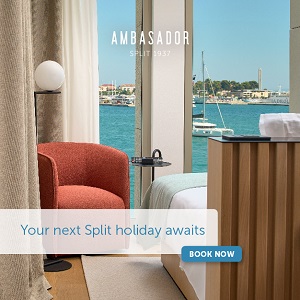Amanresorts Cavtat: Most Luxurious Tourist Project in Croatia
Greek investor Petros Stathis has been visiting numerous institutions in order to complete the most luxurious tourist project in the Republic of Croatia, Amanresorts Cavtat, in Croatia's southernmost county of Konavle which borders Montenegro.
As Marija Crnjak/Poslovni Dnevnik writes on the 13th of December, 2018, Greek investor Petros Stathis has re-activated matters over more recent days in regard to the eventual realisation of the Amanresorts project in Cavtat, otherwise being hailed as the most luxurious tourist project in the whole of Croatia, which could even end up making the list of strategic projects in the Republic of Croatia, which would be a useful move in terms of resolving the outstanding issues of spatial planning, among others, as soon as possible.
As a result of the large amount of paperwork involved in the process, the aforementioned investor has been heavily engaged in all of the required fields, from the state administration to the local administration, as Poslovni Dnevnik has unofficially published. The reactivation of the Amanresorts Cavtat project comes after more than three years after Amanresorts Cavtat was supposed to open its doors, but unfortunately encountered several stumbling blocks, mainly typically administrative ones, although Stathis never once gave up on it.
"I'm convinced that the Amanresorts Cavtat project will be successfully completed, and together with other Aman projects in the vicinity, Amanresorts Venice and Sveti Stefan (Montenegro), will become the star of the tourist sector of South East Europe," said Petros Stathis in the spring of 2015, when he explained why he was suddenly closing the Cavtat construction site.
He then stated that there were problems with the Bonvena Hotels company which was due to take care of the Cavtat project, which Stathis took over in the meantime, and that the entire chain of Amanresorts luxury resorts had gone through the process of ownership change.
For the realisation of the project, the investor is supposed to adapt the spatial planning documentation, and it's necessary to reach an agreement on various other factors, considering that the investor is seeking the closure of the beach below the area with his 30 million euro project.
The Municipality of Konavle didn't respond to Poslovni Dnevnik's question of what exactly they are willing, or unwilling, to offer to the investor in order to realise the Amanresorts Cavtat project. In addition, not even the investor himself, who has been investing in Montenegro in the meantime, has spoken publicly on the subject.
Make sure to follow our dedicated lifestyle, travel and business pages for much more.
Click here for the original article by Marija Crnjak for Poslovni Dnevnik
Meet Croatia's Female Entrepreneurs: Jelena Bikić and Silvan Cosmetics
December the 11th, 2018 - Continuing our look at some of Croatia's female entrepreneurs, Meet Jelena Bikić from Split and get better acquainted with her all natural, handcrafted cosmetics - Silvan Cosmetics.
For our international readers who perhaps don't know you, can you Introduce yourself?
My name is Jelena Bikić, and I'm from Split. I finished college in Split six years ago and I hold a Master’s degree in English Language and Art History. After graduating from college, I found it very difficult to find a job in my sector, so I decided to start my own business and while doing it, to combine my hobby with my love of art and heritage.
Silvan Cosmetics stands for natural, handcrafted cosmetic products packed in growing packages with plant seeds in them.
The design of the packaging was inspired by Croatian historical motifs, so everyone who buys a product gets a touch of Croatian history along with it. The brand name ''Silvan'' has a profound historical significance. The God Silvan was very important in the religion of the ancient Illyrians – especially for those Illyrians who lived in the region of Central Dalmatia. These tribes were known as Delmats. Silvan was their God of wild nature, forests and pastures.
As such, Silvan had the role of the protector of the herds, so, he was often shown with horns - which we decided to promote as the distinctive feature in our logo.
Our wish was to establish a connection with the legacy of our country's early inhabitants. From geometric motifs of the prehistoric art, to the God of wild nature - a story that fits perfectly with Silvan - natural beauty handicrafts: simplicity and nature.
Silvan Cosmetics' portfolio consists of three natural handmade products, and they are as follows:
1. Milk and Honey of Mount Mosor
The soap is made with ingredients typical of the Dalmatian hinterland region (goat's milk, honey, and lavender) in order to create a lasting memory of your visit to our beautiful country. The soap also has a very special package design which was inspired by the motives of the traditional folk costumes of the Dalmatian hinterland.
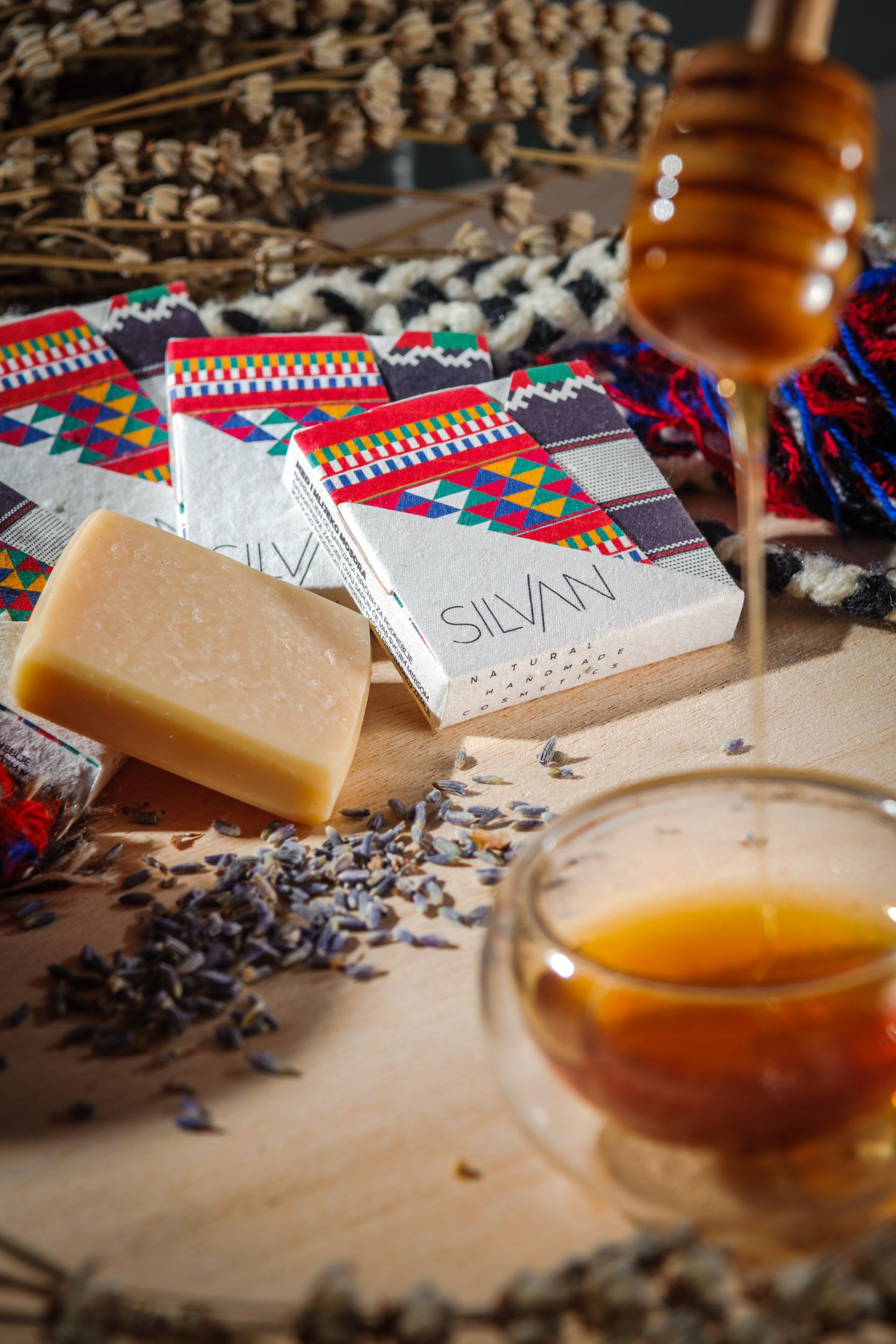
2. Sea Nymph
The soap is made of coconut oil, sea salt, and jojoba oil. The soap creates a smooth and creamy foam that leaves your skin feeling very soft and silky.
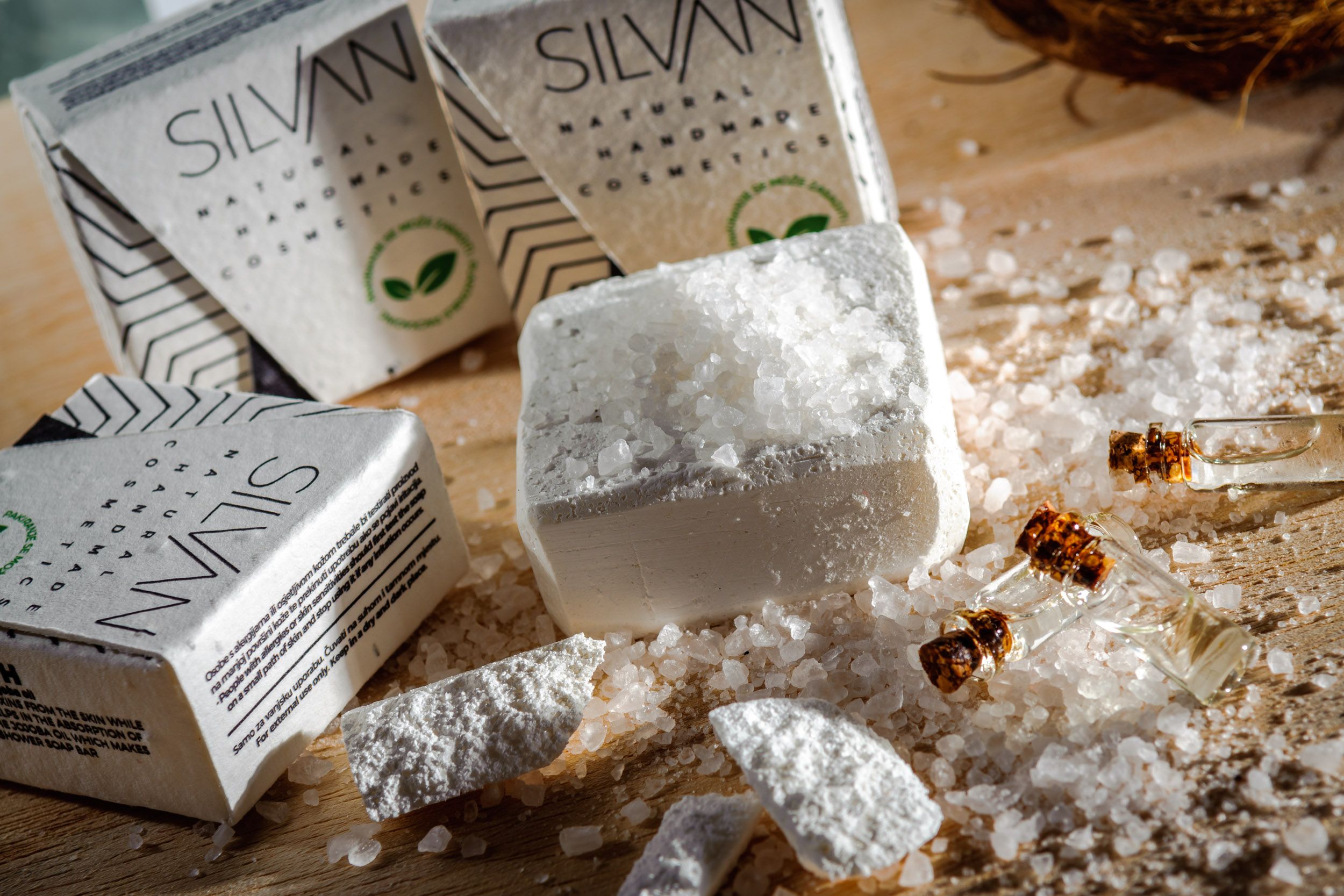
3. Black & Pure
This soft and refreshing soap is made of an active charcoal and tea tree oil which is a perfect combination for face cleansing. Silvan Cosmetics' line currently consists of three products because Silvan’s team places strong emphasis on quality. Each piece is carefully designed, produced by hand, cut, and then packed.
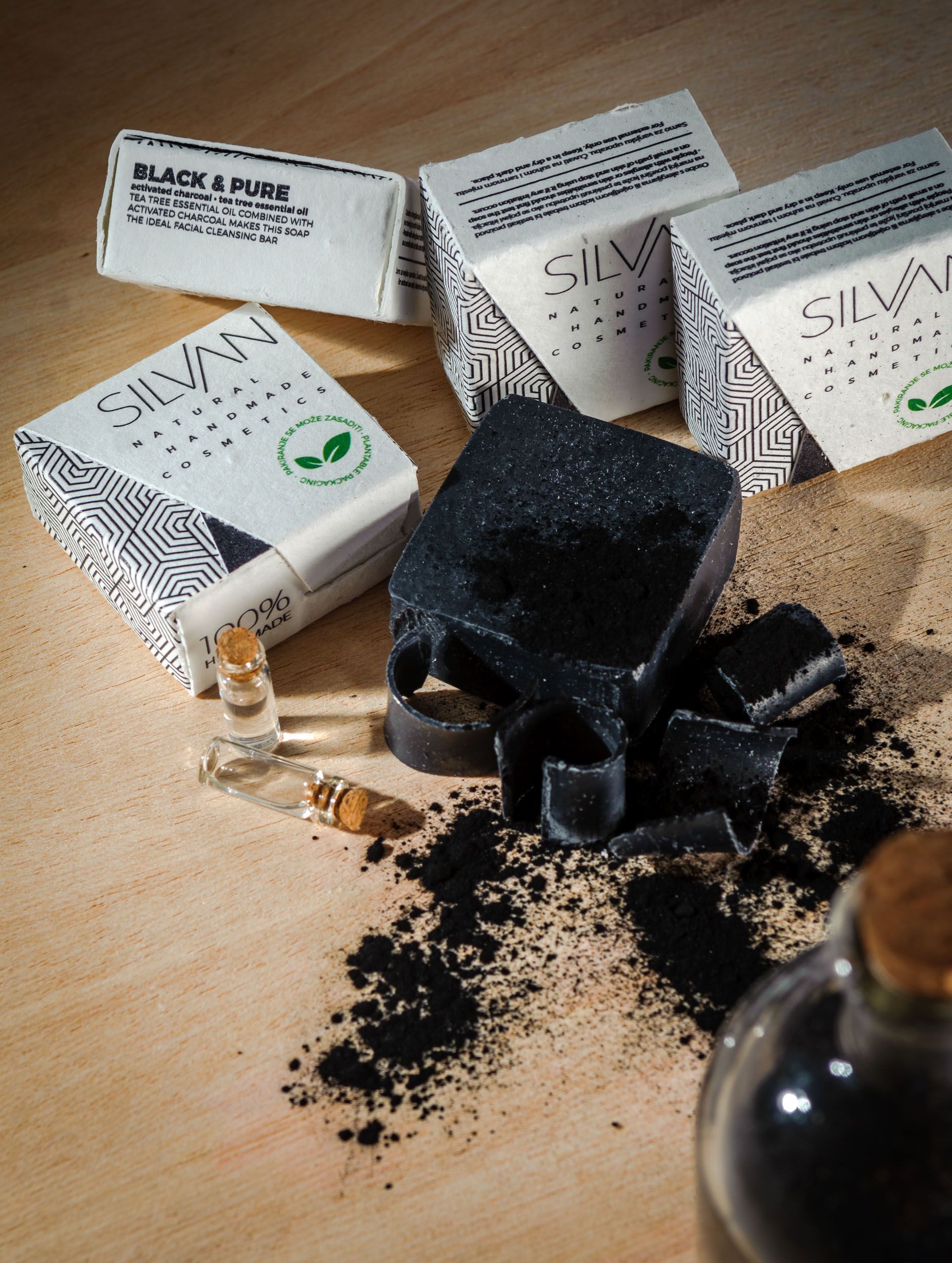
2. How did the business start and were there any major obstacles along the way?
As I mentioned, after obtaining my Master’s degree I found it very difficult to find a job in my sector in Croatia. So, I immediately thought about starting my own business. It took some time: I did market research; immersed myself in the related scientific literature; and obtained the necessary degree to start such a production.
I needed to get certificates and take courses to get a license to work since I graduated in a completely different field. It took me a year to get all the necessary licenses to start this business, and during this year I was engaged in Croatian bureaucracy and paperwork while at the same time working on product design.
Finally, I knew that there were many natural handmade cosmetic producers on the market, so I needed to find something that would make me differ from the others. What makes Silvan Cosmetics different from other natural cosmetic brands and products and so unique is its packaging: a growing package. The packaging is made from biodegradable paper embedded with a colourful variety of wildflower seeds.
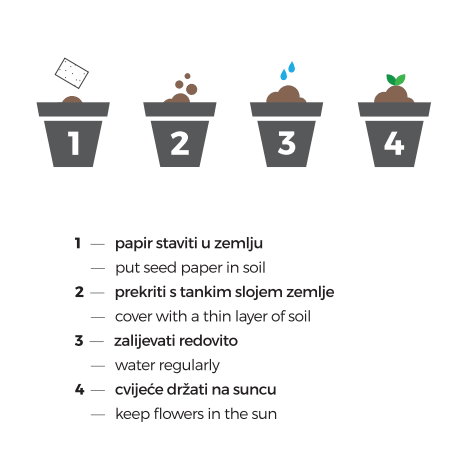
The entire package can easily be planted underneath the soil and must be regularly watered. After a while, the plant from the packaging grows. You never know which plant will grow - you will get a flower of surprise.

3. People claim that the perfect combination is to live in Croatia and make money abroad. Do you agree?
I think our country is one of the most beautiful places on earth for life. We have beautiful nature and incredible historical and cultural heritage. The economic situation, however, is a completely different story, and Croatian entrepreneurs must be very creative and unique in developing their market strategy.
4. Can you give us some positive and negative sides of business climate in Croatia?
The bureaucracy is the huge downside of doing business in Croatia. As far as the positive sides are concerned, there are several organisations doing some amazing work and you can feel the positive impact of their work – “a wind of change”. They are primarily focused on networking and they are a great source of information for entrepreneurs.
5. If there were three things you could change to improve things dramatically, what they would be?
I would start by focusing on one thing: make it easier for honest and hardworking people to do their business! Without an overwhelming amount of paperwork and without overwhelming tax!
6. Do you have any advice for foreign entrepreneurs who want to invest in Croatia and for young enthusiasts who want to start local business?
Croatia is a beautiful country with many opportunities and of course, many obstacles.
People usually have great and creative ideas, but as soon as they realise that Croatian bureaucracy and paperwork can be complicated, they usually give up on their ideas. It took me almost two years to launch my idea and my product on the market. So, it takes time but it's important not to give up. I think you must be patient and persistent. There will be many obstacles along the way, but also many good people who want to help you, and when you see your idea or product on the market, you realise that everything has paid off.
7. How do you think business climate will look in ten years in Croatia?
I'm keeping my fingers crossed! I hope will be more positive for young people with great and creative ideas. I also hope that the government will support more enthusiasts and entrepreneurs, because I hope they have understood the importance of creating new products, developing new ideas, investing and supporting entrepreneurs.
8. How has EU entry changed the business climate in Croatia?
Well, I've only been an entrepreneur since fairly recently, but I do believe it was harder to get your product on the EU market before. Now, things are rather easy when we want to cooperate with foreign countries. I took part in several EU fairs and my experiences were very pleasant.
9. What are some additional challenges experienced by female entrepreneurs in Croatia?
I wouldn’t make any distinction – I think both male and female entrepreneurs face the same amount of challenges in our country.
10. If you knew now what you knew then, would you have decided to go ahead? What was good, what was bad, and what would you do differently next time?
I believe I would have started with this endeavor anyway – because I like the challenge and above all I like the endless possibilities of creating something on your own. It's liberating and rewarding. I have had some negative experiences – my patience and nerves were tested on more than one occasion. It's very important to have a clear goal in front of you and to give your very best every day. I have met some wonderful people and I had the chance to do business with them – to work on some very interesting projects.
Make sure to follow our dedicated lifestyle page to meet Croatia's female entrepreneurs, get better acquainted with the culture and lifestyle in Croatia and much more.
Is 2018 Most Successful Year for Hotels in Dalmatia?
Hotels in Dalmatia have received confirmation that 2018 was their best year in business yet, thanks to the results of Hotel Benchmarking, which examines Croatia’s hotel industry.
Intangible Heritage of Croatia – Cheesecloth Cheese – Sir iz Mišine
December the 7th, 2018 - The intangible heritage of Croatia is complex and varied, so let us take a look at yet another one, which involves cheese. The preparation of cheesecloth cheese, locally called sir iz mišine, is a long tradition in Dalmatian inland, Dinara, Velebit, Lika, and the western Herzegovina area.
When the initial production of this piece of intangible heritage of Croatia first began isn't known, but even the ancient Illyrians prepared this type of sheep cheese. One of the theories says that production began when milk stored in sheep paunches accidentally started the fermentation process. This kind of milk had whey and cheese, which during that time, became a tradition to make.
.jpg)
The way of making the cheese hasn’t changed much from the beginning. Back then, the cheese was made from whole sheep milk but today it's done with skimmed sheep, goat, or cow milk too. It is preserved in sheep or goat paunches which gives it its typical smell and spicy flavour. It is usually produced during summer from extra sheep milk and it can be consumed from autumn onwards.
In order to make this cheese, one should follow several procedures. First, the paunch should be appropriately prepared, then the milking should be done and milk preparation should follow right after it. The whey should be prepared too. Making and preparing the sheep or goat paunch is important as it ensures good cheese making. The paunch should be properly washed, disinfected and dried from 15 to 30 days.
Knowledge and skill with regard to this craft is traditionally inherited from generation to generation. When everything is ready, the brewing process can start and the product can be stored in the paunches. Finally, the stored cheese needs to age, and then it is ready.
.jpg)
The brewing begins right after the milking and the brewing time depends on the temperature (ranges from 31-35°C to 35-40°C) and the strength of the whey. When the mixture forms a certain structure, the first layer is turned over to even up the temperature of the whole batch, then, it is cut into cubes and should rest until the whey turns into a greenish – yellow colour.
This cheese mass is then put in cloths and subsequently pressed.
After pressing the cheese, salt is added until there is enough cheese to be put into the paunch. If the paunch is filled with cheese one-time only, this ensures better quality. When the paunch is filled, the cheese is shredded and then crumbled. It is important to remove all the air from the paunch to ensure that it matures in controlled conditions (12-15°C). It takes 2-3 months to achieve its specific characteristics and to be ready for consumption.
.jpg)
To produce one kilogram of cheese, you'd need 7-8 litres of skimmed milk or 7-9 litres of fresh sheep or mixed sheep/cow milk. To produce 12 to 15 kg of cheese and 7-8 litres of slurry, you would need 100 litres of whole sheep's milk. The mature cheese is then taken out of the paunch and stored in low temperatures with the appropriate humidity and level of hygiene.
.jpg)
The area where this cheese is made is usually agricultural regions where you can find livestock like sheep, lambs, and goats. To keep this tradition going and in order to continue this type of cheese production, it is important to help to preserve small family businesses and agricultural estates which are involved in making it.
Nowadays, there are some differences in production as the sheep and milk used are different from the traditional type. In addition, technology is used to produce the cheese which makes it higher quality in the modern day.
Despite technology's influence, it is important to preserve most of the traditional ways of making the cheese active by passing down knowledge of this tradition. The final product is often a very rare find on markets and in stores but it can be found on agricultural estates and villages where they still make it.
.jpg)
Make sure to follow our lifestyle page for more information on the intangible heritage of Croatia and much more.
Ryanair Announces Flights to Split and Dubrovnik, Both Airports Clueless?
As Ryanair announces flights to Split and Dubrovnik, it appears that neither destination airport got the memo.
As we reported recently, the largest European low-cost airline, Ryanair, announced that it will launch flights from Dublin to Split and Dubrovnik as of next summer, but it seems nobody at either Split or Dubrovnik airport knows much about it.
As Josip Bohutinski/VL/Poslovni Dnevnik writes on the 4th of December, 2018, more strangely still, Ireland's popular Ryanair has already begun selling tickets for these flights which will commence on June the 1st, and be in operation until the 25th and 26th of October, 2019, starting at just 9.99 euros.
"Ryanair is pleased to announce the introduction of its new route from Dublin to Dubrovnik and Split, which will operate twice a week from June," Robin Kiely of Ryanair said.
Vincent Harrison, the director of Dublin Airport, said that he was glad to hear that Ryanair was expanding its route network by adding Dubrovnik and Split. Depite this, the director of Split Airport, Lukša Novak, says he cannot confirm that these flights will be realised at all.
Josip Paljetak from Dubrovnik Airport has said that they have had no official information from Ryanair at all. He pointed out that the company hasn't even contacted the airport this year.
"We were very surprised to see that they'd announced flights from Dublin, and it's very strange that they've started selling tickets for flights which they never agreed upon with the airport. We don't even know if we can accept their planes for when they say they want the flights,'' Paljetak said.
In Croatia, Ryanair already flies to Zadar, Rijeka, and Pula.
Ryanair offered no response when requested to explain the announcement of their 2019 summer flights to Split and Dubrovnik.
Make sure to stay up to date with our news and travel pages for much more.
Click here for the original article by Josip Bohutinski/VL on Poslovni Dnevnik
Can Dalmatian Hinterland Expect Significant Tourism Growth?
While having increased in popularity over the last couple of years owing primarily to active tourism, the Dalmatian hinterland tends to live in the shadow of its coastal cousin, but is all that about to change?
As Poslovni Dnevnik writes on the 3rd of December, 2018, the calculations of the Institute for Croatian Tourism show that the number of overnight stays in Split-Dalmatia County could rise by 30 percent, mostly in the Dalmatian hinterland, by more than 200 percent. The study in which these figures were presented was entitled "Measuring Sustainability of Tourism in Practice".
Tourism Institute researcher Zoran Klarić explained that Split-Dalmatia County tourism would be able to achieve a presumed growth of 30 percent, but only if certain obstacles are dealt with and removed before that goal, Slobodna Dalmacija reports.
"When it comes to the biggest development obstacles, we've come across an unacceptable situation with waste disposal, a power system on the edge of durability, a water supply system that depends on a single source in the case of Split, inadequate drainage, and very weak traffic power, plus parking spaces," said Klarić.
He explained that tourism in that particular county was explored through five parts: Split, the Split riviera, the Makarska riviera, the Dalmatian hinterland, Brač, Hvar, and Vis. In addition to the Dalmatian hinterland, which could account for 200 percent growth, the biggest potential for growth lies on the nearby island of Brač, where calculations show potential of up to 50 percent growth, Slobodna Dalmacija writes.
Through the additional number of guests who could come to Croatia over the coming years, the institute calculated that the potential increase of tourists could be as much as 250,000 per year. According to estimates, the largest number of overnight stays would be made by Makarska riviera (two million) followed by the Split riviera (one million and 950 thousand), while Split would see as many as 670,000 overnight stays realised.
In the coming years, the number of hospitality and tourist zones could increase, to 145 with a total of 95,000 beds on offer.
"It's almost twice the capacity available today in this type of accommodation," the institute noted, adding that there is currently no indication that the growth of tourism in private accommodation which otherwise currently accounts for about 80 percent of Split-Dalmatia County's overall accommodation capacity today will be limited.
Despite these indicators, which can be taken in both a positive and a negative way, tourism has some limitations in parts of the aforementioned county. The lack of labour is a big problem, and one which will continue to grow, and the Makarska riviera has a particular issue with its overall beach capacity.
Make sure to stay up to date with our dedicated travel and lifestyle pages for more. If you're interested solely in the Dalmatian hinterland, make sure to follow Total Inland Dalmatia.
Dubrovnik Eco Action Drags Bottles and Tyres from Adriatic Sea
With plastic pollution continuing to be an ever growing threat to the world's seas and oceans, the EU has ramped up its overall efforts to make sure member states do their jobs. Croatia has been carrying out numerous beach and sea bed cleanups up and down the coast, mainly in the pre and post season but also in the summer. The latest praiseworthy Dubrovnik eco action has seen some ever concerning items dragged from the sea.
As Morski writes on the 2nd of December, 2018, under the organisation of the Dubrovnik Tourist Board and the Dubrovnik Diving Club, yet another Dubrovnik eco action was held, this time at the location of the old town port, where the seabed was cleared of its various types of rubbish. The waste extracted from the sea bed was made up of a variety of plastic and glass bottles, all the way to much larger, bulkier items such as rubber tires and sponges, according to a report from the local portal Dubrovniknet.
One very concerning fact about this particular Dubrovnik eco action is that one of the most commonly found items were rubber tyres from various types of vehicles, this should no longer be the case since there is a recycling company in Croatia which deals specifically with old and unwanted tyres.
Old tyres such as those found during the latest Dubrovnik eco action in the medieval city's famous old port can be left for authorised regional collectors to come and get them, who then send such types of waste to have the rubber content recycled for many other items, as the further application of such material is largely beneficial in many different economic activities and sectors, including construction, infrastructure, playgrounds, and much more.
Make sure to keep up to date with our dedicated lifestyle page for more information like this. If you're interested in keeping up with just what Croatia is doing to protect the environment, follow Total Eco Croatia. If it's just the Pearl of the Adriatic you're interested in, stay up to date with Total Dubrovnik.
New Project to Help Kids with Developmental Disabilities in Croatia
As SibenikIN writes on the 30th of November, 2018, a project which brings together animals and children in the name of helping kids with varying disabilities, worth a massive million and a half kuna, will seek to help as many as twenty kids with numerous developmental disabilities in Croatia.
This project is not only a praiseworthy but an interesting one because it directly involves working with children with various developmental disabilities, these children tend to do very well once they get involved in athletic activities, and the emphasis this time, is on horses.
''The children will learn how to ride a horse, as well as how to properly groom and care for a horse in preparation for riding. We're proud because the project will go on for three years and we're expecting at least twenty children to be included in it,'' said Suzana Živković of the Kolan riding association.
It has been proven on numerous occasions that therapeutic riding has quite a few effects on the overall health of children and young people.
''Improvements in both the motor and emotional fields are seen in all children. The children are given freedom, they gain self-confidence, their social communication is strengthened, and being around nature is an incentive to a healthy life,'' noted Suzana Živković.
The Kolan riding association was established back in 2012 and currently has 48 members, including both recreational riders and children with various disabilities.
There are currently twelve horses who live permanently on the farm, four of which are ''therapeutic'' horses, and the remaining horses are ridden for recreational purposes. The breeds present at the riding club include Icelandic horses and various types of mixed breeds.
This wonderful project aimed at helping kids with developmental disabilities in Croatia is funded by European Union funds, as well as funds from the Ministry of Family and Demography and it will, as previously mentioned, last for three years, the project's partners are the City of Šibenik and the Šubićevac Education Centre.
Make sure to follow our lifestyle page for more.
Winter Weather Hits Dalmatia: Mosor Sees First Snow of Season, Biokovo Measures 10 cm
Dalmatia was hit with the bitter taste of winter (and bura) on Tuesday as temperatures dropped around the region.
From the Philippines to Dalmatia: Filipino Woman Falls in Love with Šibenik
All the way from Asia, to the oldest native Croatian town on the shores of the sea - Šibenik.
The media loves to run constant bleak stories about the mass exodus of people from Croatia heading off to Western European countries in search of better wages, more security and more opportunities to further their careers of choice. It isn't that these stories are exaggerated, Croatia does indeed find itself in a less than favourable position economically, with expert sources claiming that the country learned absolutely nothing from the crisis from which it emerged only a few years ago. While these depressing tales may not be over-exaggerated, they are perhaps somewhat oversaturated.
Despite the media headlines, many a foreigner comes to Croatia, and while life isn't easy and the bare bones of Croatia's rather grim reality hiding just underneath its pretty face might come as a shock to most, there are more and more people who come here and with persistence and an ever-adapting thick skin, manage to make it work. These people aren't just other Europeans who come from countries with systems that are similar in some way or another and therefore find it a little easier to adapt, but from countries much, much further afield than our continent.
As SibenikIN writes on the 24th of November, 2018, one 26-year-old woman all the way from the Philippines has decided to make no less than the historic Dalmatian city of Šibenik home.
''Šibenik's sunset is the most beautiful in the world!'' stated the woman who switched the Philippines for the Dalmatian coast.
"When I first came here, it was morning. Silence. And I thought: Oh my God, this is the city I want to live in!'' said Elovelle Liego in conversation with HRT/Sanja Jurisic.
Elovelle stated that her desire to live in Europe was finally realised as she began working in a hotel in the very heart of Šibenik, where she remained working after the summer as a chef, writes HRT.
"I make strudel and Šibenik cake (Šibenska torta), I can cook pašticada and salsa," added Elovelle. When it comes to work and wages, otherwise two of the things most are unhappy with, aside from politics of course, she says she is more than happy, and she loves her fellow citizens of Šibenik.
"They're very good, kind-hearted, they pass by here and greet me everyday," she said, adding that she's gradually learning the Croatian language. While Elovelle is full of praise for Šibenik's friendly locals, the feeling is very much mutual towards her.
"They have some inborn sense of hospitality, they're really approachable, hard working," said Fabiano Baranović from Hotel King Krešimir in Šibenik, when speaking about Filipino workers. It also seems that Elovelle won't be the only Filipino working in Šibenik in about one year's time.
"I think there could be a couple more, just to make sure we avoid problems in tourism," Baranović added.
And one of those key problems is a lack of workforce, with many people taking advantage of their freedom of movement across the European Union, Croatia has been left not only with a demographic crisis, but with one of its most bitter symptoms - nobody to do any work. In the area of Šibenik-Knin County alone, as many as 500 work permits for foreigners were requested this past summer.
Make sure to keep up with our lifestyle page for more. Thinking about making the move to Croatia yourself? Get acquainted with the country's residence system here.

